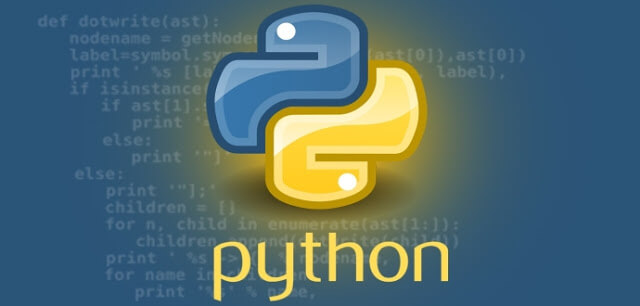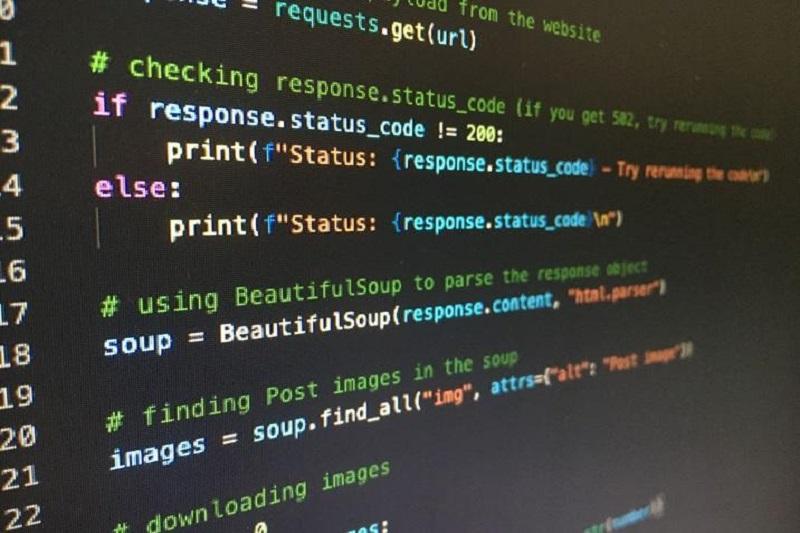What Can Be Done With The Python Programming Language?
Python Programming Language Is The Most Popular Programming Language In The IT World, Competing Closely With Java, JavaScript, And C#.
Based on criteria such as popularity, power, diversity, and available job opportunities, Python is considered one of the five main languages today.
Python has a special place among software developers, companies, researchers, and people interested in learning this language. This article will examine critical questions that have occupied some users’ minds around this language.
About Python programming language

Python is a high-level, general-purpose, open-source, multi-paradigm, multi-paradigm programming language that supports dynamic types. Guido van Rossum designed this language to provide developers with a simple way to code. More precisely, it sought to develop a language with simple syntactic composition. He stated the main reasons for designing this language as follows:
- I am designing a simple and understandable language similar to competing programming languages such as C, C++, or Java.
- It is an open-source language in which all programmers can actively participate.
- A language that is suitable for daily tasks and allows the development of the program in a short time.
- A language whose codes are as simple and understandable as English text.
What key features does Python provide to developers?
As mentioned, Python is a high-level programming language whose codes are closer to human language than machine language. This issue has made coding with Python faster, and programmers can finish applications in a shorter time than in other languages.
This programming language is supported by various libraries and frameworks, each allowing for building different web applications, artificial intelligence, mobile programming, data analysis, and more.
Python has a simple syntax and a clear structure, which, along with its high level, has made Python an ideal option for learning. Overall, the syntax’s simplicity, the structure’s clarity, and the high level of Python have made this language a powerful choice for building various programming projects.
People who have started programming with Java, C, or C Plus Plus languages do not have a particular problem in learning Python because the syntax of this language is much simpler than C Plus Plus or Java, and in a short period, you can understand the basic commands of this language.
Python is a solution for developing individual skills.
People unfamiliar with the world of programming can learn Python in a short time. However, Python is an excellent choice for experienced programmers who have experience working with programming languages. People who have worked with languages with more complex syntax than Python, such as Java and C++, are quickly attracted by the simplicity and readability of Python code.
One of the essential benefits of Python is that it helps professionals improve their skills. Typically, the more you master programming languages, the easier it is to find better job opportunities, advance your career, and increase your income.
Can programmers use Python for large projects?
Python is very popular among developers; interestingly, more and more people start learning this programming language every year. This makes Python a suitable option for large projects because many developers are working; now, if the team members use an efficient programming language with a simple syntax, debugging and fixing runtime errors ( Runtime) becomes more straightforward.
One of the goals of designing and developing Python language is rapid software development. This feature, along with various advantages such as being high-level, combining simple syntax and clear structure, being versatile, and supporting multiple programming paradigms, makes this language suitable for creating a prototype.
An Open-Source Python Programming Language

Python is an open-source programming language that all developers can contribute to. Being open-source has brought many advantages to this language. Being open-source and free has given this language significant uses in various projects, such as commercial programming.
Among the other advantages of Python being open source, we should mention the large and powerful user community and the benefit of software frameworks and numerous, diverse, and influential libraries in different fields.
Popular Python web frameworks
One of the critical advantages of Python is the existence of libraries, each of which is used for specific applications. Django, TurboGears, and web2py are essential Python libraries and frameworks in web development. However, some are more important and of interest to developers and organizations.
If you intend to learn Python web programming frameworks, consider learning Zope2, Zope3, CubicWeb, Reahls, Websauna, and Django-Hotsauce frameworks. ), Pylons, Wheezy Web, Giotto, and Grok.
Then, If you are interested in learning non-full-stack Python web applications, Flask, Hug, CherryPy, Falcon, FastAPI, Pyramid, Quart, aiohttp, and Bottle are good choices.
If you are interested in the world of artificial intelligence and machine learning, Python has good libraries called PyBrain, Eli5, XGBoost, LightGBM, CatBoost, StatsModels, Scikit-Learn Learn) and Keras are at your disposal.
If you are interested in deep learning, Python with Theano, Caffe, Apache MXNet, Spark-deep-learning, Distributed Keras, Lasagne, TFLearn, NoLearn, Fast.ai, CNTK, Elephas, TensorFlow, and PyTorch support you.
For people interested in data analysis and collecting information from different sources and want to analyze data, the libraries NumPy, Pandas, Matplotlib, Gensim, Scrapy, and Plotly. Li (plotly.ly), pilot, StatsModels, SciPy, and Bokeh are available.
The variety of libraries and different frameworks in the Python programming language and the open-source nature of this language have made Python suitable for all kinds of applications. Thanks to these libraries, Python is ahead of competitors such as R programming language, Julia programming language, and similar examples in essential topics such as artificial intelligence, machine learning, and data science.
A general-purpose programming language
Python is a general-purpose programming language. Python can be used in various fields, from application development to web development, server-side scripting, desktop applications, mobile applications, computer games, computing, scientific programming, embedded systems programming, and the Internet of Things.
Big data (Big Data), cloud computing (Cloud Computing), hardware programming (as long as it is not low-level, the assembly programming language is the best choice for low-level programming), and other areas.
As you can see, the general purpose has interested developers in different areas of problem programming with Python. Do not have for these fields. In addition, it has created a broad labor market and many varied job opportunities for Python programmers. In the following article, what can be done with the Python programming language? We will look at the most used areas of Python.
What is the process of learning Python?
People who are just planning to enter the world of programming after studying and familiarizing themselves with the powerful features of the Python programming language and the things that this language is capable of doing, and the significant job market it has that earns programmers a good income; they decide to start learning. InDesign patterns are an essential topic you should consider learning in connection with the Python language.
For this reason, it is better to think about learning topics such as Singleton Design Pattern, Factory Design Pattern, Proxy Design Pattern, Observer Design Pattern), Command Design Pattern, Template Method Design Pattern, and Model-View-Controller design pattern. Design Pattern) and State Design Pattern.
You should be familiar with installing Python, data structures in Python, functions and modules, classes, and reading and writing files. To be more precise, you should get familiar with data types in Python, operators, conditional statements, loops, strings, lists, tuples, dictionaries, functions, regular expressions, and sorting algorithms. Next, we will look at the topics of object orientation, including object, class, object orientation, and inheritance. , polymorphism, and operator overloading.
